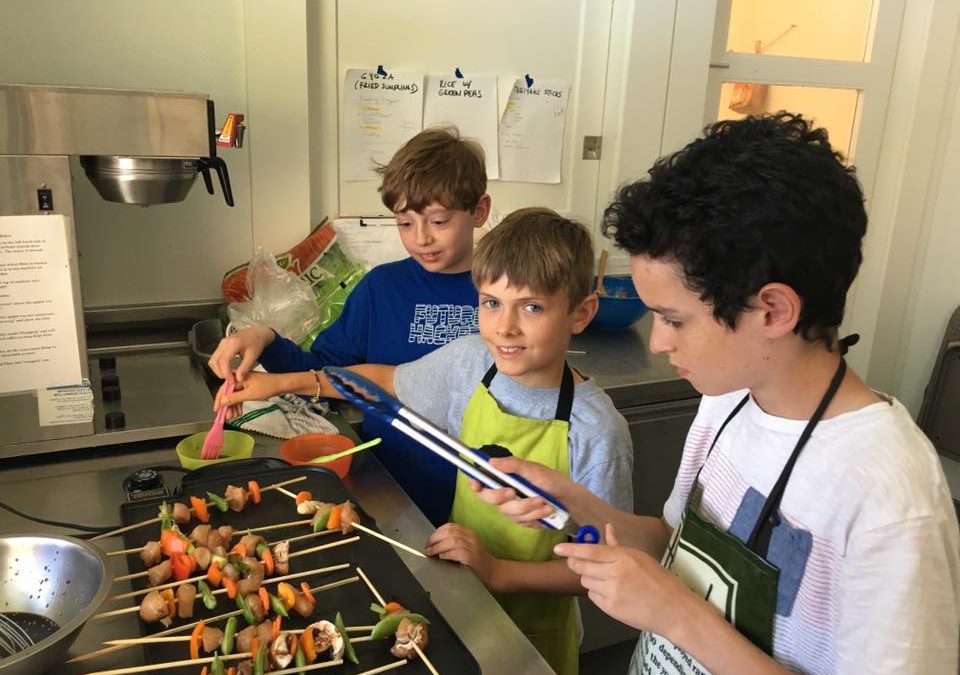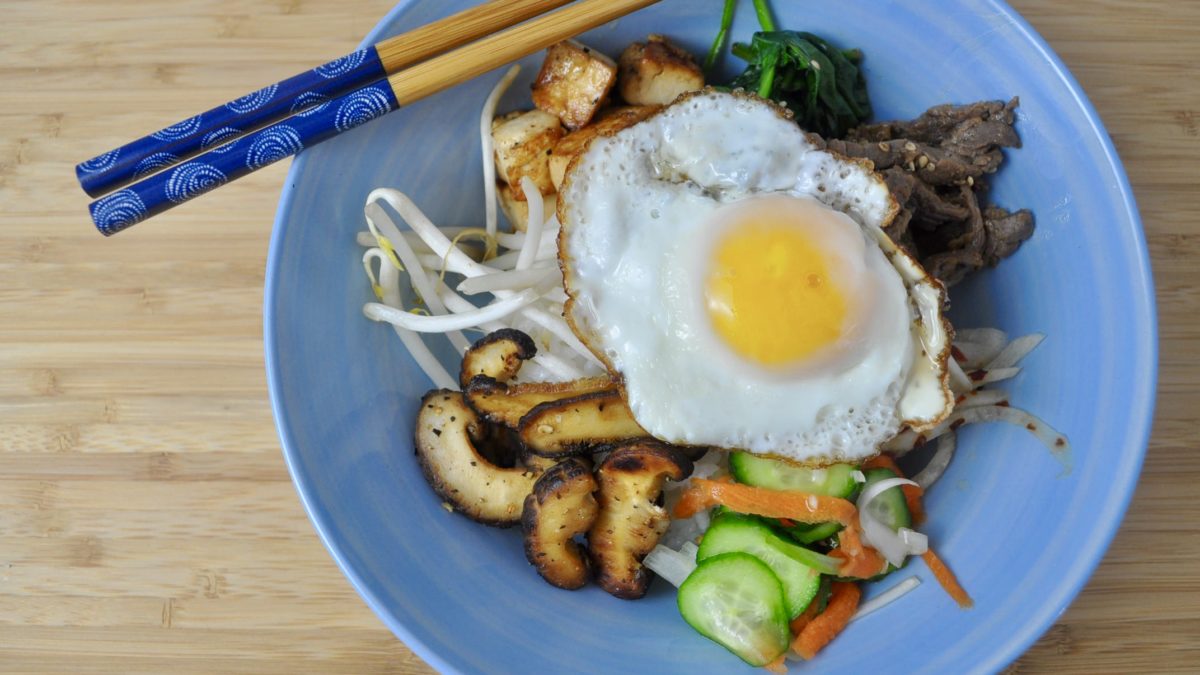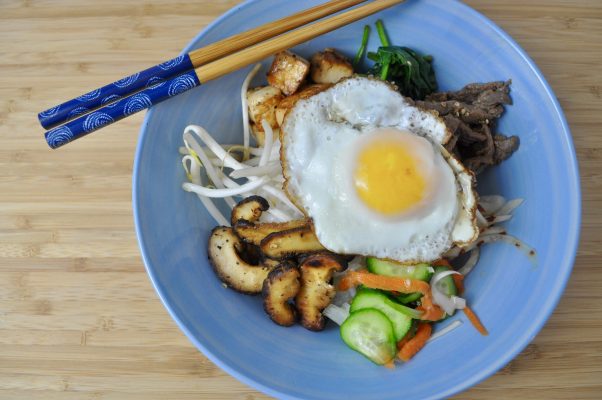From ‘MasterChef Junior’ to ‘Chopped Teens’, more kids than ever are learning to navigate their way around the kitchen. Cooking with kids not only teaches them a valuable life skill, but encourages them to use math and critical thinking skills, gets them trying new foods, and provides plenty of opportunities to talk about making healthy food choices.

Here’s a recipe from Stacie Dong and Simran Singh of A Little Yumminess that will get you cooking with kids and getting them to try a few new flavors.
By varying the basic theme of “rice with toppings,” you can take your family on a world tour: from New Orleans-style red beans and rice to Japanese donburi, Puerto Rican arroz con gandules (pigeon peas), Hawaiian loco moco, to Korean bibimbap.
Korean bibimbap, which means ‘mixed rice’, is one of our favorite global rice bowl variations. It’s a feast for the eyes, as well as the taste buds. Traditionally, it combines a variety of fresh and cooked seasoned vegetables, as well as small portions of marinated meat, egg, or tofu (sometimes all three). You can keep things simple by choosing just a few toppings, or go all out with six or seven. In any case, it’s always fun to use bibimbap as an opportunity to try out a new ingredient or flavor alongside more familiar ones.
Another reason we love bibimbap is because it’s a great example of the vivid flavor and color combinations you’ll find throughout Korean cuisine. In fact, a guiding principle of Korean cooking is to bring together five colors (red, yellow, white, green and black) and five flavors (sweet, spicy, salty, sour and bitter). Kids will love the chance to go on a culinary scavenger hunt, looking for these colors and flavors in their own unique bowls.
See camps & classes from A Little Yumminess
Bibimbap Basics
- Hot, cooked, short grain rice (or rice of your choice)
Suggested toppings:
- Bulgogi (Marinated beef – see recipe below. This can be pan-fried as well, if you do not want to use the oven)
- Cucumber, cut into thin strips
- Red, orange or yellow bell pepper, cut into thin strips
- Carrots, peeled and cut into matchsticks
- Mung bean sprouts, blanched in boiling water for several minutes until they begin to wilt, then seasoned with salt and a few drops of sesame oil
- Sautéed spinach, dressed with soy sauce, a few drops of sesame oil and sesame seeds
- Sliced mushrooms, sautéed with soy sauce and a pinch of sugar
- Zucchini, grated and squeezed to remove excess liquid, then quickly stir-fried and seasoned with salt and pepper
- Nori (sheets of seaweed used for sushi), cut into thin strips
- Seasonal vegetables, stir-fried with minced garlic and red pepper flakes
- Fried egg (We like to make the yolk runny and then mix it in with the rice and other toppings)
- Extra firm tofu, dried well, then pan-fried until golden, cut into cubes and drizzled with soy sauce
- Gochujang (Korean chili paste), mixed with soy sauce.

Bulgogi Recipe
(Serves 2 adults and 2 kids as part of a bibimbap bowl)
- ½ pound beef (rib eye or top sirloin)
- 2 tablespoons soy sauce
- 1 tablespoon brown sugar
- 1 clove garlic, minced
- 1 teaspoon minced ginger
- ½ teaspoon sesame oil
- ¼ cup grated Asian pear (or substitute pear puree)
- 1 chopped scallion (white and light green parts only)
- Pinch red pepper flakes (optional)
- Combine all ingredients except for beef, stirring well to dissolve sugar.
- Slice the beef thinly, against the grain, then toss with marinate and refrigerate for at least 30 minutes.
- Cover a baking sheet with foil and spray lightly with vegetable oil. Drain excess marinade from beef and lay slices in a single layer on the baking sheet.
- Broil for 5 minutes or until cooked through.

















